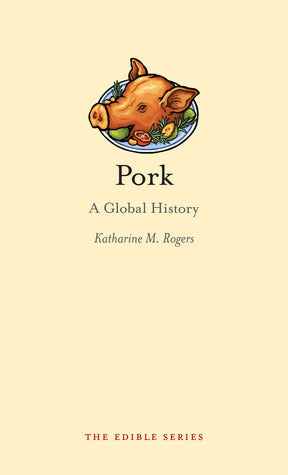This title is currently out of stock. Leave us your email address, we’d let you know when it’s in stock again!
-

A note on book covers: while we do our best to ensure the accuracy of cover images, ISBNs may at times be reused for different editions of the same title which may hence appear as a different cover.
Pork: A Global History
Pork: A Global History
Couldn't load pickup availability
A Global History follows the transition of pork from fashionable food to popular fare while also exploring the many edible parts of a pig and ways they are prepared. Katharine Rogers depicts how pork stopped being featured at aristocratic banquets and in high-end cookbooks as it became associated with the lower and middle classes. She explains how European settlers brought pork to the Americas and that barrel pork, kept submerged in a barrel of brine, was a staple of working class people in the United States. While roast suckling pig remains the most luxurious form of pork, Rogers reveals that people also use pig’s blood to make black puddings, its tail to flavor soups and stews, and its fat for frying and as a pastry shortening. Beautifully illustrated and filled with recipes from around the world, Pork will be a necessary addition to the bookshelf of any lover of bacon, sausage, and pork chops.
Details of Book
Related Collections:
A note on book covers: while we do our best to ensure the accuracy of cover images, ISBNs may at times be reused for different editions of the same title which may hence appear as a different cover.

-
One Line Summary
Explores pork's cultural journey from elite to everyday.
-
Who is this book for?
If you're fascinated by food history or love discovering diverse culinary traditions, Pork: A Global History offers a captivating look into how pork has shaped cultures and cuisines worldwide. You'll enjoy the stories behind its transformation from a symbol of wealth to a staple of the working classes, along with eye-opening insights into its many edible parts and global recipes. This book makes you appreciate pork not just as a meat, but as a window into social history and culinary innovation.

